We're sorry, but something went wrong
Please try reloading the page
We're sorry, but your browser is unable to play this video content.
If this continues please try upgrading your browser or contact us for assistance.
We're sorry, but this video is currently unavailable on mobile.

The Governor 3 - The Mutinous Lieutenant (Episode Three)
Television (Full Length Episode) – 1977
This title has two backgrounds:
Politics and Paybacks: The Writer's Perspective

A Background

Politics and Paybacks: The Writer's Perspective
By Keith Aberdein 26/05/2017
When in the early 1980s it was announced the Governor-General would attend the Circa production of Greg McGee's Foreskin's Lament at the Wellington Opera House, the great but rabid defender of New Zealand morals, Patricia Bartlett, wrote in protest to the Queen. Not only would Her Majesty's representative be confronted with full-frontal male nudity, but among those naked actors would be Keith Aberdein. And, as her letter stressed, he was the one who wrote The Governor!
Bartlett and Prime Minister Robert Muldoon were the high profile enemies-in-chief of the series. At least her motives were pure. Her hatred of The Governor seemed to be predominantly fired up by the series' revisionist destruction of the 'good Governor Grey' myth. The fact that this included his adultery further stoked her obsession with all matters sexual.
As a fellow adulterer and master political manipulator, Muldoon may have identified with Grey. But above all he had scores to settle and power to cling to. It's hard to believe the think-big spender who later took the country to the economic brink cared seriously about the cost of the anything. Some of his allegations about the scandalous waste of money during shooting (subsequently disproved) were fed to him by a variety of agenda-bearers.
The fact that state television did almost nothing to fund independent filmmakers was a cause for righteous anger. The godfather of the private industry was John O'Shea. Des Monaghan, TV One's second Controller of Programmes had, despite a general reluctance to invest outside, been talked into giving money to Roger Donaldson's film Sleeping Dogs. Not a good investment and when, some months later, O'Shea asked Monaghan for a TV One contribution to Tony Williams feature Solo, he was declined.
O'Shea and Williams had both worked with Muldoon while filming National Party TV commercials in the 1972 election. For my sins and the money, I was the pretend interviewer. Some years later at a charity cricket match, drinks to hand, I had a brief conversation with the Prime Minister about The Governor. He laughed that laugh and suggested he'd merely been doing our old mate, John O'Shea, a favour.
Favours and paybacks. There were a few of both in the wash-up. Monaghan, as well as inheriting The Governor, had been producer of Gallery in the Brian Edwards days. Muldoon essentially forced him to sue for libel. Against the odds — and the jury — Monaghan won when the judge threw out the initial verdict as a palpable nonsense. From the safety of Sydney — where Monaghan now also operates — it seems that suing Muldoon was almost the last brave act in the history of New Zealand television. Perhaps understandably.
TV One's Head of Drama, Michael Scott-Smith, who fought heroically to protect the series, was forced out of the job as prime scapegoat. TV One Director-General, Alan Morris, arguably the more successful of the two channel chiefs, was passed over when South Pacific's (later TV2) Allan Martin was made sole Director-General of the entire system. Ian Cross was his Chairman. A man of many parts and considerable achievement, Cross as the writer of the novel The God Boy, might have been expected to be an ally of confronting drama. On the evidence he was hardly that. Maybe his own early foray into TV drama writing — not a glorious success — left its scars.
The producer and director of the better episodes, Tony Isaac, refused to go away. But in order to make Iris, the 1980s telefeature about Robin Hyde, he was forced to resign from TVNZ. He died a few years later, only in his 40s.
The other great enduring victim of The Governor was New Zealand TV drama itself. There were many things wrong with the series — some of the writing included — but nothing as risky, ambitious or subversive has appeared since. For almost a decade the country seemed forced to suffer perhaps the worst television system in the English-spoken world. Its leadership — though much better paid — showed as much vision and courage as the men, for they were all male, who'd managed the NZ Broadcasting Corporation.
It's not so much that old men forget, but perhaps they forget too little; that through the distorting lens of time they remember imperfectly; that they recall themselves too close to the barricades. How much any of The Governor wars still matter is moot. For me, however, there is one element that remains worth consideration. May have even made the fight worth it.
Pākehā who make claims for their contribution to the Māori cause are to be viewed with as much suspicion as men who say they're feminists. Therefore I tread softly in coming to what, for me, is the most important legacy of The Governor. Others have commented on what its screening meant for Māori people. I wasn't born a New Zealander. I grew up in East Africa and Ireland, both victims of a colonialism that happened to be British. Even as part of the problem — white, male and nominally Protestant — I'd somehow come to believe there was a deep injustice at the heart of all imperial systems.
Coming to New Zealand in the early 1960s, I was constantly told it enjoyed the best race relations in the world. It may have been true. But eventually, one had to ask: "compared to what?" And "what does that mean?"
At one stage Governor originator Michael Noonan, Tony Isaac and I discussed, not entirely flippantly, the possibility of screening episode four, 'Now We Are One People (He Iwi Tahi Tahou)' exclusively in te reo. We came to the conclusion that was probably a Bridge Pā too far. But along with the opening Hōne Heke/Henry Williams episode, the story of Wiremu Tāmihana (played by Don Selwyn) was, for us all, the defining place to stand.
Isaac and Noonan, with Hamish Keith, had been party to TV series Pukemanu and its first walk in the minefield of racial and cultural conflict. Before that Rudall Hayward and even "our old mate" John O'Shea, had made movies challenging racial simplicities. But a significant majority of white New Zealanders had still nodded comfortable assent to Keith Holyoake's assertion that 'our' Māoris made terrific bulldozer drivers. His implication being: wasn't that enough?
Did The Governor change that? I don't know. Possibly the nodding became less comfortable. There may have been some context for Pākehā, about the Bastion Point protest. And that bloody 1980s rugby tour by our other old mates, the serious racists with whom George Grey had spent time, seemed to bring a few more average white Kiwis on to the streets than we'd expected.
Quite deliberately, and with the arrogance of relative youth, we'd set out to bring down a few flagpoles of our own. But as Hōne Heke understood, flagpole lowering has to be repeated. And it's never enough to destroy the symbols if you cannot change some hearts and minds. Of course, as an old man remembering, I like to think it helped change something about how the country began to resolve the betrayals that white dominance inflicted.
As for New Zealand television drama, I remember reading a claim by a couple of its early writers that Shortland Street was the first show to deal with the country's racial relationships. Oh dear. They may have been from Australia, the only country where New Zealand-made television has the encouragement and legal protection of a local quota.
- Keith Aberdein was fired from current affairs show Compass in 1969 for refusing to rewrite a script. In the 70s he became a scriptwriter, including on early drama Pukemanu, and bicultural thriller Epidemic. He went on to co-write movie Utu and act in Smash Palace, before crossing the Tasman to work in Australian television.
A Background
By Paul Stanley Ward 26/05/2017
The Governor was touted as television history even before it had screened. "New Zealand's War and Peace" was how TV One's Head of Drama Michael Scott-Smith described the concept in 1975. Publicity for preview screenings reads like something from the pages of a Boy's Own annual:
"At the age of 28, Captain George Grey was handed the Governorship of New Zealand — a beautiful but lawless land, inhabited by natives given to cannibalism. The few Europeans who had dared to settle were struggling to survive. The story of a man of ambition who was given power, which hadn't been known since the days of the Roman Empire."
The pumped-up comparisons set the scope for the series' reception. Richard Campion wrote in The Listener, after the screening of the first episode: "...tension was in the air. Tonight the big cannon, The Governor, was to fire or fizzle. Officers of the Parliamentary Watchdog Finance Committee would be noting every unnecessary extra, historians baring their teeth for inaccuracies, members of Nga Puhi and Williams clans crouching over their manas [sic] and a host of critics wondering whether to bark, bite or wag a tail."
This was clearly event television of a different magnitude to a Shortland Street wedding or Dancing with the Stars finale.
Writer Michael Noonan came up with idea of revisiting the Grey story in the early 1970s. Most previous accounts were from a Pākehā perspective, with Victorian gent Grey as the 'Good Governor', steering 'God's Own Country' towards its egalitarian destiny. But extensive primary research revealed a Grey as shady as his name, who, as well as being a figurehead of the new colony, was duplicitous towards Māori, a drug addict, and a lecher.
At the same time Māori activism was challenging assumptions about the colonial period, and there was a nationalist push for local drama on TV One. In a "friendly blackmail" deal with Scott-Smith, Noonan and producer/director Tony Isaac agreed to work on soap Close to Home in exchange for the opportunity to develop the Grey story. Writer Keith Aberdein made up the creative trio behind the series. Aberdein recalled: "I don't think Tony or I ever pretended this was only entertainment ... we both believed that the best writing, the best drama, was subversive".
Noonan and co were conscious that the story incorporated a Māori perspective. Actor and Māori advisor to the production Don Selwyn noted that the series broke ground in seeking a point of view "which has not been written about but has been handed down from generation to generation by our tīpuna and by our living elders".
With English actor Corin Redgrave cast in the lead role, and an all-star cast of Kiwi acting talent (George Henare, Martyn Sanderson, Don Selwyn, Grant Tilly), shooting took place, much of it in and around Avalon Studios from January to May 1976. Farms in Otaki and Lower Hutt and water catchments with preserved native bush were chosen for period fidelity. In a Listener piece Hugh Nevill noted the scrupulous set design: "even a lone pine tree would "blow" the period [detail]".
The scale placed serious demands on the TVNZ/National Film Unit co-production; it had few, if any, local models. Peter Muxlow, who directed episode 'The Lame Seagull' described it as "total chaos, the reality of going out there and shooting ... There was no electricity there, no nothing. You had to pull generators through the mud and there was no communication, no cell phones."
Concerns about spiralling costs escalated, but filming took on its own momentum. Muxlow recalls talking to Tony Isaac: "I was absolutely exhausted and said: 'Tony, I'm just going to do it [shoot] again. We're so far in the shit now it doesn't really matter. The only thing that matters is to make it as good as we can'."
Just weeks before the series was due to screen in late 1977 a media furore erupted. Despite there being other costly period drama shows made around the same time (Hunter's Gold, The Mackenzie Affair), The Governor was singled out by a government razor gang on the prowl in economically difficult times. Claims that it had cost more than a million dollars made front-page news.
Prime Minister Robert Muldoon called the funding "extravagant" and took the unusual step of requesting a formal inquiry. The outcome exonerated the producers but led to reform of the Broadcasting Corporation's accounting practices. In her book Ourselves in Primetime, Trisha Dunleavy suggests Muldoon was smarting from run-ins with a series of TV One journalists. Don Selwyn's view was that the attacks were motivated by fears the series would "open the whole issue of race relations."
The press coverage generated controversy, but also unheralded interest in a local drama. Isaac said that at its peak The Governor claimed nearly 50% of the viewing population, "the sort of rating you normally only associate with rugby tests or Olympics."
Reviews ran the gamut from magnificence to failure to "magnificent failure" (Pamela Cunninghame in The NZ Herald). Criticism tended to focus on the confusion caused by the non-chronological arrangement of the series (each episode was a discrete story arranged around a theme), with Campion missing signposts as "we went through history at a gallop". However most critics agreed it was an impressive production in terms of scale, technical achievement, "universally excellent" performances (particularly Henare as Hōne Heke, and Selwyn as peacemaker Wiremu Tāmihana), Māori involvement, and its revision of New Zealand's colonial roots. Cunninghame concluded it was "a splendid coming of age party for New Zealand television, and worth every disputed cent".
The network rated the series "the major success" of the year in its annual report, and in many ways it fulfilled the series' bicultural ambitions. Auckland Star reviewer Barry Shaw trumpeted: "It has made Māori matter. If Pākehā now have a better understanding of the Māori point of view; if the Māori, particularly the younger generation, now have a pride in their race, it stems from The Governor. Now, how do you measure that in dollars?"
Such praise for a TV programme — The Governor as a harbinger of bicultural bliss — would be unthinkable in these attention-diluted days, but Shaw's zeal should be placed in context. The government had just admitted liability for land crimes (in 1975, when the Waitangi Tribunal was set up) and land march hikoi were stirring public emotions.
Auckland Mayor Sir Dove-Myer Robinson warned about the series re-opening old wounds, and patronisingly fretted about the impact of the history on young Māori. Some sign-of-the-times newspaper pieces included "Know the lingo!" guides to te reo in The Governor, filled with such illuminations as "Kia Ora: a greeting" and "Marae: village common".
Given the audience size and the 'campfire' that television represented in the 1970s (there had only been a second channel for two years), The Governor must have helped enlarge public consciousness of New Zealand history. Professor Ranginui Walker praised the series in a 1977 Auckland Star piece as being exciting for Māori children, because for the first time it had depicted Māori as "goodies". "People now understand why the Bastion Point protestors are camped on Crown Land and why groups like Ngā Tamatoa exist".
The Governor won the 1978 Feltex Award for Best Drama. Episode four, 'He Iwi Ko Tahi Tatou (Now We Are One People)' won the 1978 Feltex Award for Best Script.
What of The Governor's legacy over three decades on? Has it been the River Queen of TV drama, in that the behind-the-scenes dramas and pressures of making the great Kiwi colonial story have defined the limits of local drama since? Certainly nothing like it in terms of 'prestige' Masterpiece Theatre historic scope, has been attempted on TV since.
In the context of New Zealand's screen industry The Governor furore was a key break for feature filmmaking. Many of the 'indies' were annoyed that public purse strings had been opened for network TV productions, especially for 465 minutes of The Governor. Breakout feature Sleeping Dogs, produced by Roger Donaldson and Ian Mune was released the same year; in some reviews The Governor was unfavourably compared with the film. The NZ Film Commission was to be launched a year later in 1978 (partly spurred by the success of Sleeping Dogs). The result was a hastening of the migration from TV to film as the medium in which to tell bigger dramatic stories.
Watching The Governor years later, there's a nostalgic thrill in seeing New Zealand history shown on such a scale for the small screen (even if it all seems a little modest viewed through post-Lord of the Rings glasses). Battle scenes! Ships at sea! Injustice and rebellion! It's some achievement that the players and the stage feel suitably epic, and not just archive fodder for cultural cringe.
The Governor may not have succeeded in being the Tolstoy of Kiwi television, but it challenged received assumptions about a key personality in NZ history, stirred up a racial wasp's nest; and provoked large audiences, controversy and parliamentary scrutiny...historic stuff.
- Paul Stanley Ward was Founding Editor of NZ On Screen.
If you liked this, you might also like...

The Governor
Spanning decades, historical...
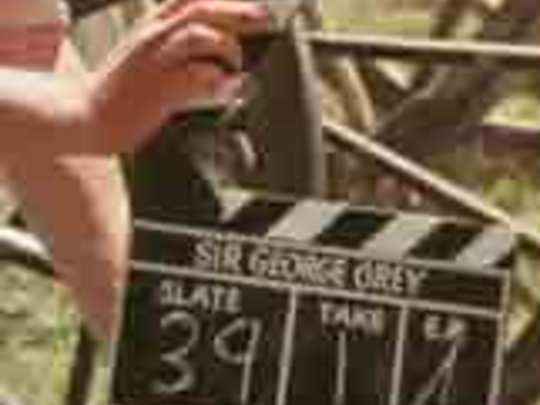
The Making of The Governor
Go behind the scenes on the shearing scene (see clip three)
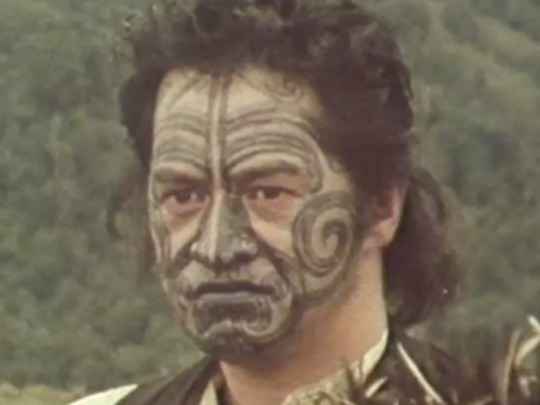
The Governor 5 - The Lame Seagull (Episode Five)
Another episode featuring Governor Grey's power battles

The City of No
Jeremy Stephens also co-starred in this

Winners & Losers: Shining with the Shiner
More sparring males from another age

This is New Zealand
Director Hugh MacDonald also made this iconic tourism film

Gloss - First Episode
Actor Janice Finn later produced this iconic Kiwi soap
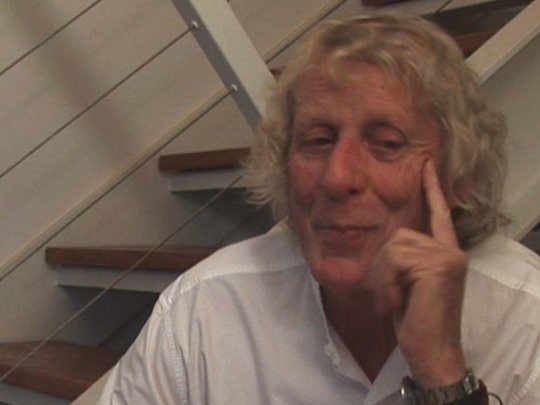
Keith Aberdein: Scripting NZ classics...
Interview with Governor writer Keith Aberdein

Delores
Short film about men turning against each other

Close to Home - First Episode
Janice Finn also acted in the first episode of this soap

The Mackenzie Affair - Tancred (Final Episode)
Another colonial drama from the 1970s

On the Day
Anti-drink drive TV drama from the same writing team
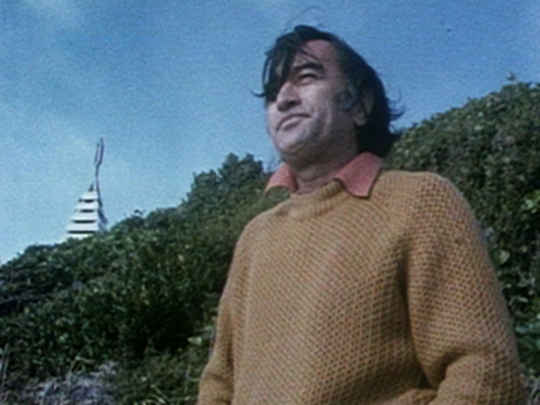
Island of Spirits
Actor Jeremy Stephens voices poetry in this film

There is a Place
One of Hugh Macdonald's many tourist films

The Governor 4 - He Iwi Ko Tahi Tatou / Now We Are One People (Episode Four)
Fourth episode from this landmark series
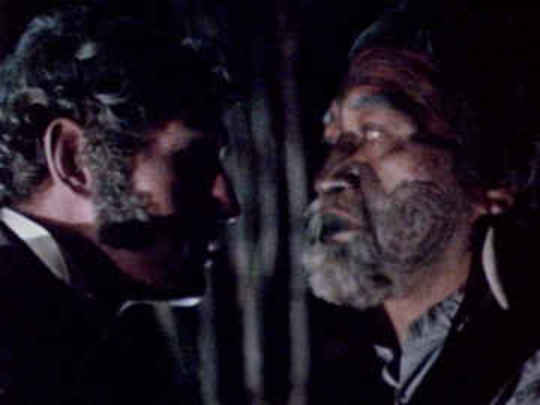
The Governor 6 - To the Death (Episode Six)
Final episode of the series

Winners & Losers: The Woman at the Store
Acclaimed colonial TV drama from the same decade
Which size would you like?
Copy this code and paste it into your website.
<!-- Start NZ On Screen - The Governor 3 - The Mutinous Lieutenant (Episode Three) - Badge -->
<a href="https://www.nzonscreen.com/title/the-governor-episode-three-1977" > <img src="https://www.nzonscreen.com/content/badges/the-governor-episode-three-1977.horizontal-badge.jpg" width="330" height="90" alt="The Governor 3 - The Mutinous Lieutenant (Episode Three)" /></a>
Which clip would you like to embed?
Start clip at:
eg. 1m7s
Would you like the clip to be a fixed size or responsive?
Copy this code and paste it into your website.
<!-- Start NZ On Screen -
The Governor 3 - The Mutinous Lieutenant (Episode Three)
Size:
585
by
410
-->
<iframe width="585"
height="410"
style="width: 585px"
src="https://www.nzonscreen.com/embed/9b84cb669fd8afc7" frameborder="0" allowfullscreen ></iframe>
<!-- End NZ On Screen -
The Governor 3 - The Mutinous Lieutenant (Episode Three)
-->